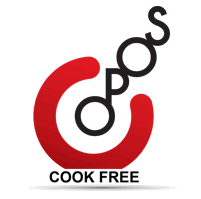Techniques – #Y for Yolk Color Retention



Most hard-boiled eggs are invariably overcooked. Instead of bright yellow/ orange yolks, we get a stinky, dry yolk with a grey skin. Instead of moist and fresh smelling whites, we get them rubbery and smelly. Instead of easy to peel shells which slip right off, we have shells which stick tight and are a pain to peel. All these are caused by overcooking.
The discoloration of the yolk & the smell was a problem reported by many members. They complained that their children refused to eat hardboiled eggs. Both the discolouration and the rotten egg smell arise because of a chemical reaction that happens on prolonged cooking. Sulfur in the egg whites reacts with the iron in the yolks, forming ferrous sulfide. This site of this reaction is the regions where both yolk & white touch each other, the surface of the yolk. These reactions also produce the stinky egg smell. Apart from these problems, overcooking toughens the white and makes it rubbery. It dries out the yolk.
As the egg is heated, the proteins in egg white coagulate. The Hydrogen sulfide gas naturally present in the white gets squeezed out into the yolk. Here, it bonds with iron, forming the greenish-grey iron sulfide.
As the heating continues, proteins coagulate even more. Whites get tougher. More gas is squeezed out and more iron sulfide is produced. The surface of the yolk changes colour to greenish grey. The proteins in the yolk also coagulate and dry out. Their colour changes from moist orange/ deep yellow to pale yellow.
Chefs have known the goal of perfectly boiling an egg is to prevent overcooking. Numerous rules have been suggested:
1. Never boil eggs. Always simmer them.
2. Do not cook beyond 15 minutes.
3. Immerse eggs in cold water after cooking.
The traditional recipes for perfect hardboiled eggs:
Step 1: Place eggs in saucepan large enough to hold them in single layer. Add cold water to cover eggs by 1 inch. Heat over high heat just to boiling.
Step 2: Remove from burner. Cover pan. Let eggs stand in hot water about 15 minutes for large eggs (12 minutes for medium eggs; 18 minutes for extra large).
Step 3: Drain immediately and serve warm. Or cool completely under cold running water or in bowl of ice water.
These rules & recipe are the best that traditional cooking offers. They are easy to state, but almost impossible to follow. Water boils at different temperatures at different altitudes. Eggs come in different sizes. The ambient temperature varies across places. So we cannot have a standard cooking time. None of these variables are factored in these rules. Unless we ensure the cooking conditions are exactly same, for anyone, anywhere, anytime, we cannot guarantee a perfect recipe for boiled eggs.
We tried to ensure almost similar cooking conditions, irrespective of where you live or the type of eggs you use. We tried keeping cooking time as the only variable that controlled the consistency of the cooked egg. The OPOS recipe called for the eggs to be heated over high heat with a measured quantity of water till pressure builds up and you get a whistle. The size of the eggs , the temperature of the eggs or the number of eggs do not matter too much as all these factors automatically increase/ decrease the time needed for the first whistle.
If chilled eggs are used, the whistle would take longer, as the cold water needs more heat to turn to steam. If lesser number of eggs are used, the whistle would happen in a much shorter time. As long as uniformly sized eggs are used, they will all cook the same way. If very large eggs are used, we need to increase the cooking time marginally to allow time for heat to reach their centers.
After repeated trials, we found 1/2C water and 1 whistle/ 6 mins is all that is needed to cook over a dozen eggs in a 2L pot. We found that 1C water and 1 whistle/ 11 mins is all that is needed to cook around 30 eggs in a 3L pot. We also found that by just varying the cooking/ resting time, we can vary the consistency of the eggs.
1. Soft Boiled:
Eggs cooked for one whistle, pressure released, cut open immediately. Runny yolk, soft white.
2. Medium Boiled:
Eggs cooked for one whistle, pressure left to come down on its own, cut open immediately. Firm but sticky yolk, soft whites
3. Hard Boiled:
Eggs cooked for one whistle, pressure left to come down on its own, left to cool till bearably warm. Moist & crumbly yolk, firm but tender white.
4. Over boiled
Eggs cooked for one whistle, pressure left to come down on its own, Let to cool completely and cut open. Dry, crumbly yolk with an greyish green skin, smelly yolk, rubbery white.
The biggest validation of this technique came when members reported that their children who avoided hard-boiled eggs earlier, started relishing them.
This technique was extended by adding washed eggs as a layer while pressurebaking. We found that they cooked perfectly in 3-4 whistles, without a drop of added water. The texture could now be controlled precisely by just varying the cooking time/ number of whistles and resting time. Perfect consistency is possible every single time. As a bonus, we found that the shells slip right off. The hardboiled eggs could be peeled by just shaking them around in the pot, without even touching them.
